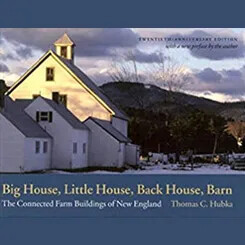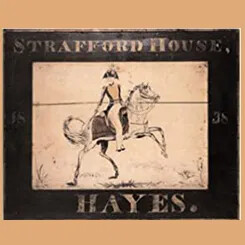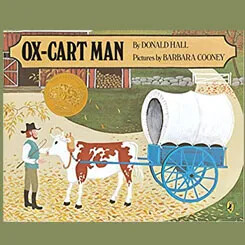Creating a Transportation Network
What transportation infrastructure emerged during this period, and how did it help communities connect with one another?
The rapid development of towns that had begun in the 18th century continued well into the 19th century. New land was settled and towns formed, particularly in the Lakes Region, the White Mountains, and the Great North Woods. Even in the settled areas of New Hampshire, new towns were founded, as communities and villages seceded from larger towns. In fact, New Hampshire’s four original settlements eventually split into 25 different towns. By 1850, New Hampshire was well and truly settled, with nearly 250 towns reaching to the edges of all four of its borders.
Once the hard work of founding a new settlement was over, people began to look beyond the borders of their towns. Travel was hard, uncomfortable, and painfully slow at this time, but the needs of business and government, in addition to personal connections, highlighted the importance of being able to move people and goods around the state. The creation of transportation networks, whether roads, canals, or trains, encouraged greater interaction between the people of New Hampshire and cultivated a consciousness that the society in which they lived was larger than their town borders.
Roads. In the 18th century, each town was responsible for building and maintaining their own roads, and all roads were local. There were no highways or interstates that linked communities together. The townspeople determined where roads would be built, and there was no larger plan to provide rhyme or reason to the road network. The result was a zig-zag pattern of roads and byways, many of which were so rocky as to be nearly impassable on horseback. In the 1760s and 1770s, the colonial legislature passed a series of highway acts to impose some order on the road network, but the laws did not assign any money to the effort, and the movement to create a more sensible transportation network to link communities failed. The responsibility for the roads remained with each individual town.
By the 1790s, the need for better transportation around the state had become more critical. The spread of development, the need for self-governing bodies to meet, discuss, and decide, and the growing interest in buying and selling goods all necessitated decent transportation. People needed to be able to get from Point A to Point B in a reasonable fashion. Thus, in 1796, the New Hampshire legislature incorporated what became the First New Hampshire Turnpike, running from Concord to Portsmouth. It was a private road, owned and operated by a group of investors who charged a toll (usually a penny) to those who used the road. Gatehouses appeared at intervals on the road where the fee was collected. The building of the First New Hampshire Turnpike set off a period of road construction in New Hampshire that resulted in roughly two dozen turnpikes covering 600 miles of road that crisscrossed the state between 1796 and 1809. (Many of these turnpikes eventually evolved into the state highways we still use today.) The Tenth New Hampshire Turnpike, opened in 1803, even blazed a path through an area of the White Mountains that would become known as Crawford Notch, allowing travel to the Great North Woods. It was rough going through the mountains, though, and horses initially had to be helped over the rocks that comprised the turnpike through the narrowest part of the pass. Nevertheless, the Tenth New Hampshire opened a whole new area of New Hampshire to development.
Turnpikes were substantially better built than town roads and made travel easier. They had fewer rocks, were graded to minimize changes in elevation, included sturdy bridges to cross rivers and streams, and were even designed to provide drainage for excess water, which cut down on flooding and the amount of mud. But these roads would still be considered primitive by today’s standards.
Travel by turnpike was slow, arduous, and dirty. Most people walked (covering an average of 14–18 miles per day), rode on horseback (at roughly 35 miles per day), or traveled by wagon or private carriage (which fell somewhere in between). A lack of maps or signage, other than granite mile markers that can still be seen today, meant that it was often difficult for travelers to find their way. Because the pace of travel was so slow, getting lost or taking a wrong turn could result in a serious loss of time and effort. Everyone traveled by day, as nighttime travel increased the chances of getting lost. Unsurprisingly, travel was also seasonal in New Hampshire, but it wasn’t winter that presented the greatest challenges to travelers, many of whom wore snowshoes or used sleighs. Spring proved the most difficult season to be on the roads, as mud often made both the turnpikes and town roads impassable.
In the early decades of the 19th century, public stagecoaches—the first form of public transportation—became popular in New Hampshire. The public stages carried not only passengers but also the mail and newspapers, providing a means for reliable communication between communities. Traveling by stagecoach was challenging as well. Stages could be crowded—sometimes carrying as many as 16 people sitting on one another’s laps!—and both accidents and breakdowns were common occurrences.
Stagecoaches were known for giving passengers a bumpy ride, especially when the conditions of the roads were poor. But a pair of New Hampshire craftsmen, Lewis Downing and J. Stephens Abbot, sought to improve the passenger experience with the development of what became known as the Concord coach. The Abbot-Downing Company of Concord, which opened its doors in 1828, designed a flexible harness system for the frame of the coaches that allowed the main compartment of the coach to swing rather than bounce, leading to a much smoother, more comfortable ride. The Concord coach became the standard for stagecoaches by the middle of the 19th century, and the Abbot-Downing Company produced hundreds of them and shipped them all around the world, even as far away as Australia.
Travel by road may have been difficult, but the creation of an intrastate road system and the establishment of public transportation options were important steps in linking people in communities around New Hampshire.
Canals. Discouraged by the challenges of overland travel, many people turned to New Hampshire’s rivers instead. The Abenaki had long used the rivers to travel great distances, making them, for all intents and purposes, their highways. In the late 18th and early 19th centuries, Americans in general were in the midst of what became known as “canal fever,” culminating in projects like the Erie Canal that linked the Great Lakes with the Hudson River in New York. New Hampshire’s 40,000 miles of rivers made the possibilities of water travel particularly attractive, although the many falls and rapids presented challenges for those attempting to use the state’s waterways for transportation. The only way to make New Hampshire’s rivers navigable was to build locks and canals to allow travelers to bypass the waterfalls.
The Merrimack River was the most logical place to start. The mighty river ran through Concord, Manchester (called Derryfield until 1810), Nashua, and Lowell and emptied into the Atlantic at Newburyport, Massachusetts. In 1803, the possibilities for water travel became even greater when the Middlesex Canal opened, linking the Merrimack River at Lowell to Boston Harbor. The canal did much to open Boston markets to New Hampshire farmers, even if the Amoskeag Falls prevented river travel further north than Manchester. The falls were the largest in New Hampshire and were a significant obstacle. Beginning in 1794, a Goffstown merchant named Samuel Blodgett had been trying to build a canal around the falls but hadn’t met with much success. None of his designs proved sufficient, and he bankrupted himself in the process. Finally, in 1807, after the state legislature allowed him to hold a lottery to raise funds for another attempt, Blodgett’s one-mile canal opened on the Merrimack River, allowing boats to circumvent the Amoskeag Falls and travel north. (Pieces of Blodgett’s canal can still be seen today near the Amoskeag Bridge.) By 1815, the Merrimack River had been made navigable all the way to Concord.
Travel by water was seasonal and still slow. The trip from Concord to Boston could take 4–5 days. More goods than people traveled on the river, carried on 75-foot longboats or rafts made of tree trunks tied together with rope. Plans were made to build an extensive canal system throughout New Hampshire, with an effort to make the Connecticut River navigable all the way to the St. Lawrence River in Canada. Another canal was expected to link Lake Winnipesaukee to the Piscataqua basin on the seacoast. Such efforts were expensive, though, and “canal fever” in New Hampshire proved as brief as it was in the rest of the United States. Before the plans could be put into effect, a new form of transportation had emerged that made water travel obsolete—the railroads.
Railroads. Invented in Great Britain, the first steam trains began operating in the United States in 1827 in the Mid-Atlantic region with the Baltimore & Ohio Railroad. Trains caught on quickly, and soon tracks were being laid throughout the country, particularly in the Northeast. New Hampshire got its first rail line in 1838, with an 18-mile stretch spanning from Lowell to Nashua. Rail travel had several advantages over other forms of transportation. It was faster than any other options available at the time; it required less maintenance than roads, even if the initial investment was more expensive; it could move large amounts of goods and people; and rail lines could be laid almost anywhere in New Hampshire, making nearly every corner of the state accessible.
Initially, though, the effort to bring railroads to New Hampshire became mired in a political battle known as the Railroad War of 1840–1844. Although rail companies were private businesses, the state legislature had to approve each venture, as train tracks crossed town lines. The disagreement over the railroad was between two factions of the Democratic Party, which was the only viable political party in New Hampshire at the time. (The Democratic Party of the 19th century bore little resemblance to the Democratic Party today. Then, it championed small government, a rural economy, and states’ rights.) One faction saw the potential of railroads to support the state’s growing industrial sector and related trade. The other faction feared that the railroads would disrupt traditional agricultural patterns in New Hampshire. Eventually, the pro-railroad faction gained the upper hand, and dozens of small rail companies emerged in the 1840s and 1850s, which created a patchwork of rail lines throughout the state. By the end of the century, all these little companies had been gobbled up by the Boston & Maine Railroad, which grew to dominate rail travel in northern New England.
The impact of the railroad on New Hampshire was enormous. For the factories that were being built all over the state, railroads brought them raw materials and allowed them to send their finished products to market. Trains also offered a way for thousands of immigrants to reach the factories and cities in which they would build their new lives. These factors were essential in allowing the state’s Industrial Revolution to thrive. Without train transportation, there would never have been an Amoskeag Manufacturing Company. But the railroads’ impact on the state was not limited to industry. It also proved vitally important to agriculture. The self-sufficient farmer of the colonial era had gradually evolved into a market-driven producer of agricultural products. This shift first occurred with sheep. Beginning around 1815, New Hampshire farmers converted their fields into pastures and raised huge numbers of sheep to produce wool for the growing number of textile factories springing up throughout the Northeast. New Hampshire and Vermont became the epicenter of the Great Sheep Boom, which resulted in the construction of thousands of miles of stone walls throughout the state. (For more on the agricultural practices of this period and the Great Sheep Boom, see Unit 8: Changing Times on the Farm.)
The transition from crops to sheep meant that New Hampshire farmers were no longer producing their own food. Instead, they sold their wool to textile merchants and used the proceeds to buy the food and items they needed. This shift marked a major change. No longer were New Hampshire farm families producers; they became consumers. Goods were moved by road and train to even the smallest communities, where people would purchase them with cash, thereby ending the barter system that had characterized earlier times. Whereas colonial town centers had usually contained a church or meeting house, a cemetery, and a tavern, town centers began to expand to include general stores and marketplaces so that people could purchase what they needed. This new economy also created a market for all the goods being created in the new factories that were springing up. As demand increased, even more new businesses and mills emerged to provide an even greater supply of goods. The people of New Hampshire grew to depend on a supply chain that linked them to people in other communities, both within the state but at even great distances as well.











